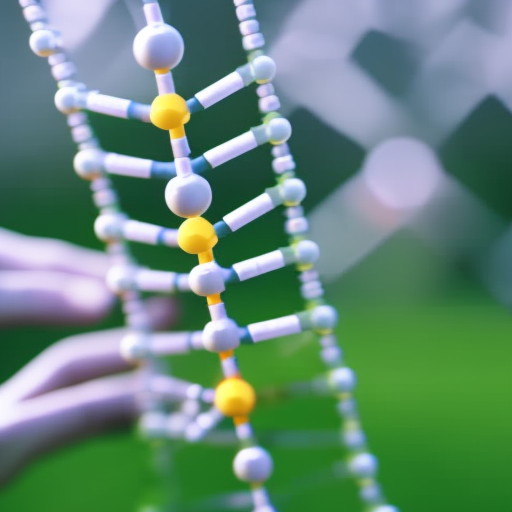Molecular Cloning: A Comprehensive Summary
Molecular cloning is a technique used to create identical copies of a specific DNA sequence, allowing researchers to study and manipulate genes. This process involves several steps, including DNA extraction, amplification, and insertion into a vector. Molecular cloning has revolutionized the field of genetics and has numerous applications in medicine, agriculture, and biotechnology.
1. DNA Extraction
The first step in molecular cloning is to extract the DNA of interest from the source organism. This can be done by breaking open the cells and separating the DNA from other cellular components. Various methods, such as enzymatic digestion or mechanical disruption, can be employed to achieve this. The extracted DNA is then purified to remove impurities and contaminants.
2. Amplification of DNA
Once the DNA is extracted, it needs to be amplified to obtain a sufficient amount for further analysis. Polymerase chain reaction (PCR) is the most commonly used method for DNA amplification. PCR involves repeated cycles of heating and cooling to denature the DNA, allowing primers to bind, and DNA polymerase to synthesize new DNA strands. This process exponentially increases the amount of DNA, making it suitable for cloning.
3. Insertion into a Vector
To clone the DNA of interest, it needs to be inserted into a vector, which is a DNA molecule capable of self-replication. Vectors are typically derived from plasmids, small circular DNA molecules found in bacteria. The DNA of interest and the vector are cut with the same restriction enzymes, creating compatible ends that can be joined together. DNA ligase is then used to seal the ends, creating a recombinant DNA molecule.
4. Transformation and Selection
The recombinant DNA molecule is introduced into host cells through a process called transformation. Bacteria are commonly used as host cells because they are easy to manipulate and grow rapidly. The transformed cells are then selected based on their ability to take up the recombinant DNA. This is often achieved by including a selectable marker, such as antibiotic resistance, in the vector. Only the cells that have successfully taken up the recombinant DNA will survive in the presence of the antibiotic.
5. Screening and Identification
After transformation and selection, the next step is to identify the cells that contain the desired cloned DNA. This can be done through various methods, such as DNA sequencing, restriction enzyme digestion, or polymerase chain reaction. Once the desired clones are identified, they can be further analyzed or used for various applications.
Applications of Molecular Cloning
Molecular cloning has revolutionized the field of genetics and has numerous applications in various fields:
- Gene Function Studies: Cloning allows researchers to study the function of specific genes by manipulating their expression or introducing mutations.
- Production of Recombinant Proteins: Cloning is used to produce large quantities of proteins of interest, such as insulin or growth factors, for medical and industrial purposes.
- Genetic Engineering: Cloning is a crucial step in genetic engineering, allowing the introduction of foreign genes into organisms to confer desired traits, such as disease resistance or increased crop yield.
- Gene Therapy: Cloning is used to create viral vectors for delivering therapeutic genes into patients’ cells to treat genetic disorders.
- Pharmaceutical Development: Cloning is employed to create libraries of DNA sequences that can be screened for potential drug targets or used in the development of new drugs.
In conclusion, molecular cloning is a powerful technique that allows researchers to create identical copies of specific DNA sequences. It involves DNA extraction, amplification, insertion into a vector, transformation, and selection. Molecular cloning has numerous applications in gene function studies, protein production, genetic engineering, gene therapy, and pharmaceutical development. This technique has significantly advanced our understanding of genetics and has paved the way for numerous scientific and medical breakthroughs.












